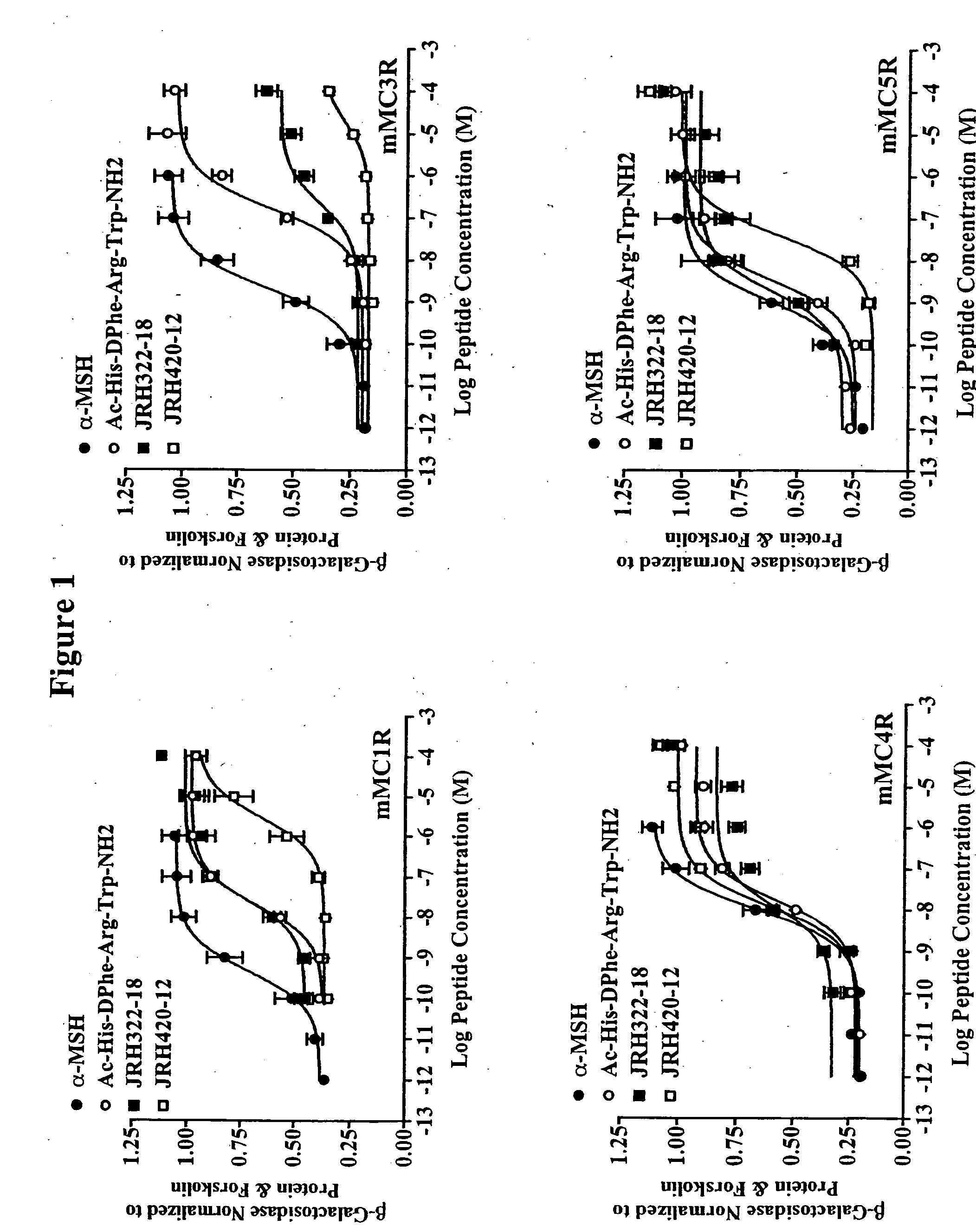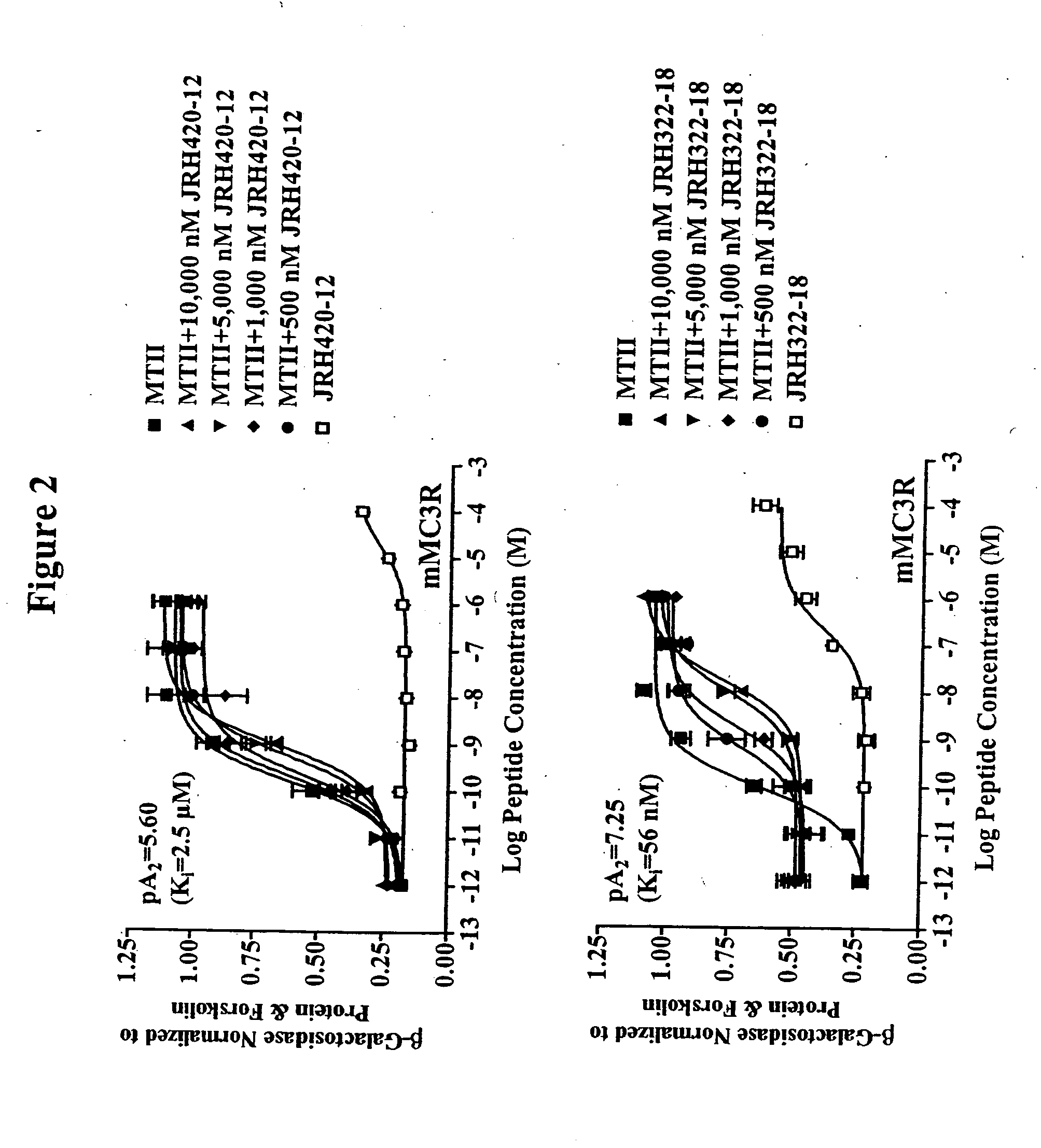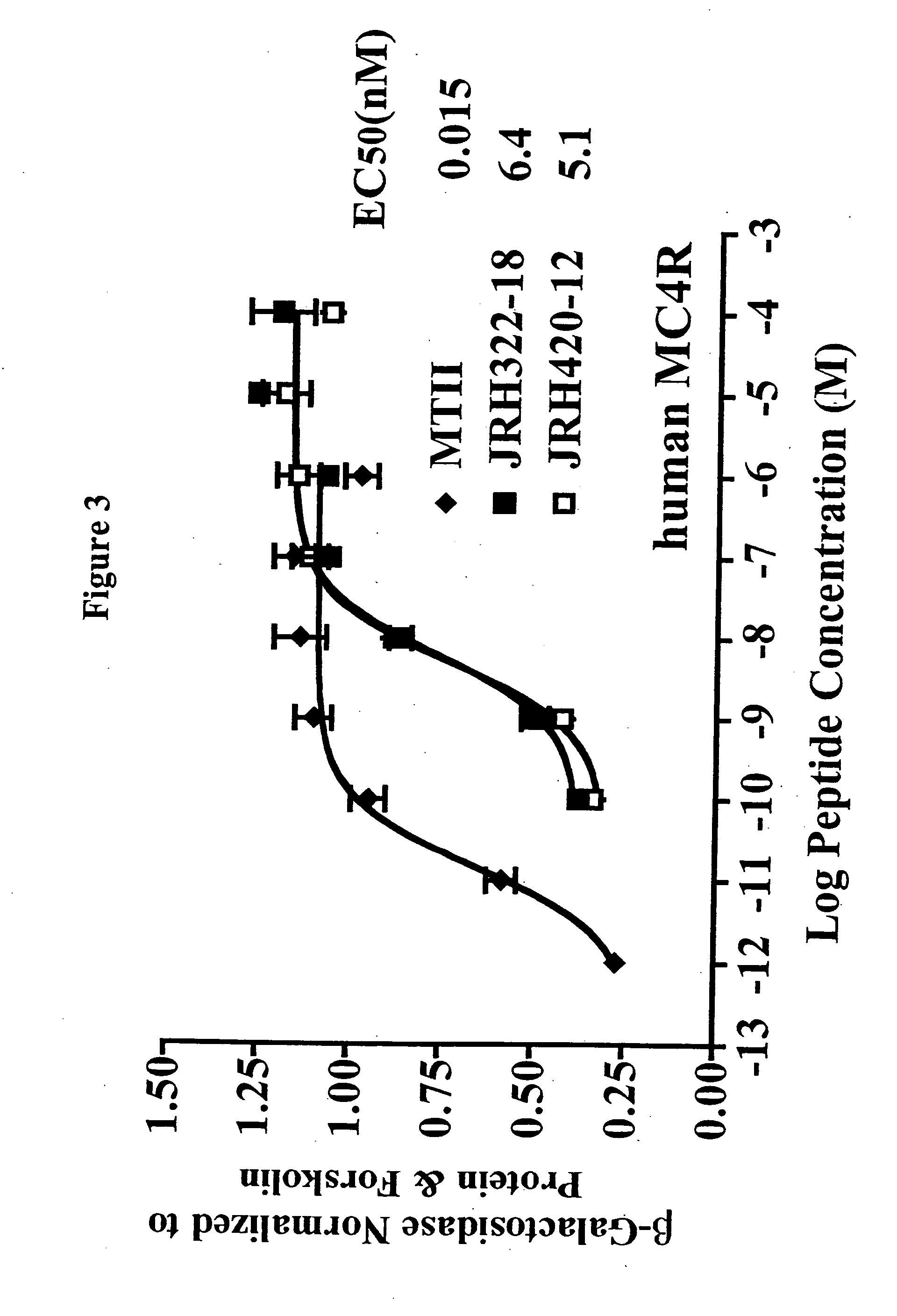Peptides and methods for the control of obesity
a technology of peptides and methods, applied in the field of peptides, can solve the problems of increasing body death rate, complex number of chronic conditions, and respiratory diseases, and achieve the effects of reducing increasing the number of deaths, and improving the quality of li
- Summary
- Abstract
- Description
- Claims
- Application Information
AI Technical Summary
Benefits of technology
Problems solved by technology
Method used
Image
Examples
examples
[0035] Peptide synthesis was performed using standard Fmoc methodology on an automated synthesizer (Advanced ChemTech 440M05, Louisville, Ky.). The amino acids Fmoc-Anc, Fmoc-(pI)DPhe, Fmoc-His(Trt), Fmoc-Arg(Pbf), Fmoc-DPhe, Fmoc-Trp(Boc) are all commercially available. The coupling reagents 2-(1-H-Benzotriazol-1-yl)-1,1,3,3-tetramethyluronium hexafluorophosphate (HBTU) and 1-Hydroxybenzotriazole (HOBt) are all commercially available. All reagents and chemicals were ACS grade or better and were used without further purification.
[0036] The peptides were assembled on rink-amide-MBHA resin (0.44 meq / g substitution) [commercially available]. The synthesis was performed using a 40 well teflon reaction block with a course teflon frit. Approximately 100 mg resin (0.044 mmole) was added to each reaction block well. The resin was allowed to swell for 2 hrs in DMF and deprotected using 25% piperidine in DMF for 5 mm followed by a 20 mm 25% piperidine incubation at 450 rpms. A positive Kaise...
PUM
| Property | Measurement | Unit |
|---|---|---|
| volume | aaaaa | aaaaa |
| volume | aaaaa | aaaaa |
| volume | aaaaa | aaaaa |
Abstract
Description
Claims
Application Information
 Login to View More
Login to View More - R&D
- Intellectual Property
- Life Sciences
- Materials
- Tech Scout
- Unparalleled Data Quality
- Higher Quality Content
- 60% Fewer Hallucinations
Browse by: Latest US Patents, China's latest patents, Technical Efficacy Thesaurus, Application Domain, Technology Topic, Popular Technical Reports.
© 2025 PatSnap. All rights reserved.Legal|Privacy policy|Modern Slavery Act Transparency Statement|Sitemap|About US| Contact US: help@patsnap.com



